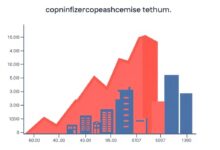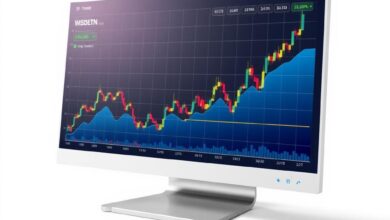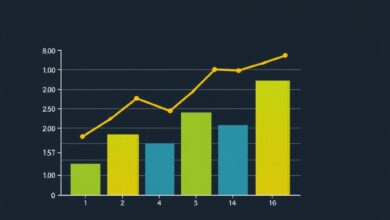How to earn passive income with dividend ETFs

Investing in exchange-traded funds focused on consistent cash distributions can significantly enhance your financial portfolio. Concentrating on long-term growth, these investment vehicles allow you to benefit from diversified equity exposure while generating reliable returns.
To optimize your approach, consider selecting funds with a history of increasing payouts and low expense ratios. Look for ETFs that primarily hold blue-chip stocks, as they tend to provide stability and potential capital appreciation alongside regular cash flow.
Additionally, implementing a reinvestment strategy can amplify your earnings over time. By automatically reinvesting dividends, you harness the power of compounding, leading to exponential growth in your investment value.
Stay informed about sector performance and economic trends that may impact dividend-paying companies. A well-rounded understanding of market dynamics will aid in making informed decisions that align with your financial goals.
By adopting these methods, you can create a robust portfolio that thrives through market fluctuations and continues to grow your wealth steadily over the years.
Selecting High-Yield ETFs
Focus on funds that consistently distribute substantial payouts. Look for exchange-traded products with a yield above 3-4%, which often indicates strong cash flow and management efficiency.
Examine the underlying assets of each fund. Prioritize those invested in sectors known for robust returns, such as utilities, real estate, or consumer staples. Assess their historical performance during economic fluctuations to gauge resilience.
Evaluate expense ratios critically; lower fees can enhance overall returns. Aim for funds with costs below 0.5% to retain more of the generated revenue.
Investigate the dividend growth rate over the past five years. A stable or increasing payout signals financial health and commitment to returning capital to investors.
Review distribution history meticulously. Funds should have a track record of regular payouts without significant cuts, reflecting reliable revenue streams.
Consider diversification within your selections. A mix of different sectors mitigates risk while maximizing potential earnings from various market conditions.
Lastly, stay informed about macroeconomic trends affecting interest rates and inflation, as these factors can influence yield attractiveness and fund performance. Regularly re-evaluate your holdings to align with shifting market dynamics.
Building a Diversified Portfolio
Focus on incorporating a mix of sectors and asset classes to reduce risk. Allocate funds across utilities, healthcare, consumer staples, and technology to capture diverse earnings streams. This approach ensures stability during market fluctuations while maximizing potential returns.
Consider varying the geographic exposure of your holdings. Investing in both domestic and international funds can mitigate country-specific risks. Look for those that provide exposure to emerging markets alongside established economies, creating a balanced distribution of risk and reward.
Examine the expense ratios of chosen funds; lower fees can significantly enhance overall returns over time. Prioritize investments that align with your financial goals and risk tolerance, ensuring that each selection contributes positively to the long-term vision of your portfolio.
Regularly review your allocations to ensure alignment with market conditions and personal objectives. Rebalancing at least annually helps maintain desired exposure levels and capitalizes on changing yield opportunities.
Finally, reinvest any earnings from your assets back into the portfolio. Compounding effects can substantially increase future cash flows, enhancing growth potential over extended periods.
Reinvesting Dividends Wisely
Automatically reinvesting payouts is a powerful tactic to amplify growth. Choose a platform that offers a robust dividend reinvestment plan (DRIP) to ensure dividends are consistently put back into purchasing additional shares, which accelerates compounding returns over time.
Monitor the timing of reinvestments carefully. Ideally, reinvest during market dips when prices are lower, allowing for more shares to be acquired with the same amount of cash. Utilize tools or alerts to stay informed about market fluctuations that may present advantageous buying opportunities.
Focus on maintaining a balance between reinvested funds and other investment avenues. Allocating some dividends towards new asset classes can help diversify risk and provide exposure to different sectors. This strategy minimizes reliance solely on one type of investment.
Evaluate the performance of individual holdings regularly. If certain funds consistently underperform or fail to meet your return expectations, consider reallocating those dividends into more promising options. This proactive approach ensures your portfolio remains aligned with financial goals.
Lastly, keep an eye on tax implications associated with reinvesting profits. Understand how capital gains tax affects overall returns, especially if selling shares becomes necessary down the line. Being informed allows for strategic decision-making regarding distributions versus reinvestments.
Monitoring Performance Regularly
Track the metrics of your investments consistently. Focus on key indicators such as yield, total return, and expense ratios to assess the effectiveness of your holdings.
- Yield Analysis: Review the distribution rates periodically. Ensure they align with your financial goals and reflect market conditions.
- Total Return Evaluation: Analyze both capital appreciation and distributions over time. Compare these against benchmarks to gauge performance.
- Expense Ratio Check: Keep an eye on management fees. Lower costs can significantly impact long-term gains.
Utilize tools for tracking performance. Many platforms provide features for monitoring multiple funds in one place, simplifying the evaluation process.
- Set Up Alerts: Use notifications for significant changes in price or yield to stay informed without constant checking.
- Create a Review Schedule: Establish a quarterly review process to reassess holdings and make necessary adjustments based on performance data.
Diversify your analysis by comparing various funds within the same category. This helps identify which options consistently outperform others and supports informed decision-making regarding reallocations.
Simplifying complex data into understandable visuals can enhance clarity. Charts and graphs provide quick insights into trends over time, making it easier to spot underperformers or strengths in your portfolio.
A final recommendation: maintain a focus not only on short-term fluctuations but also on long-term trends. This broader perspective allows you to make strategic decisions that align with your investment philosophy while maximizing returns from your selected vehicles.







